Wondering what to use to season your steak? These are 7 of the best herbs for steak. They compliment the flavor of the beef and can be used in several ways to season the meat. Try adding them to:
Marinades – marinades are made up of three components:
- An acid such as vinegar, citrus juice or wine.
- An oil such as olive oil or vegetable oil.
- Flavoring ingredients such as herb and spices.
Marinades are a way to infuse your steak with flavor. The acid ingredient helps to tenderize the meat and the oil provides a way to transfer the flavor of the herbs and spices to the meat.
Direct seasoning – you can sprinkle these herbs directly on the steak before, during and after cooking.
Flavored Butter – adding herbs and spices to butter to make a flavored butter (also called compound butter) is a great way to add the taste of these herbs to your steak. Try this easy to make garlic herb butter recipe.
7 Of The Best Herbs For Steak
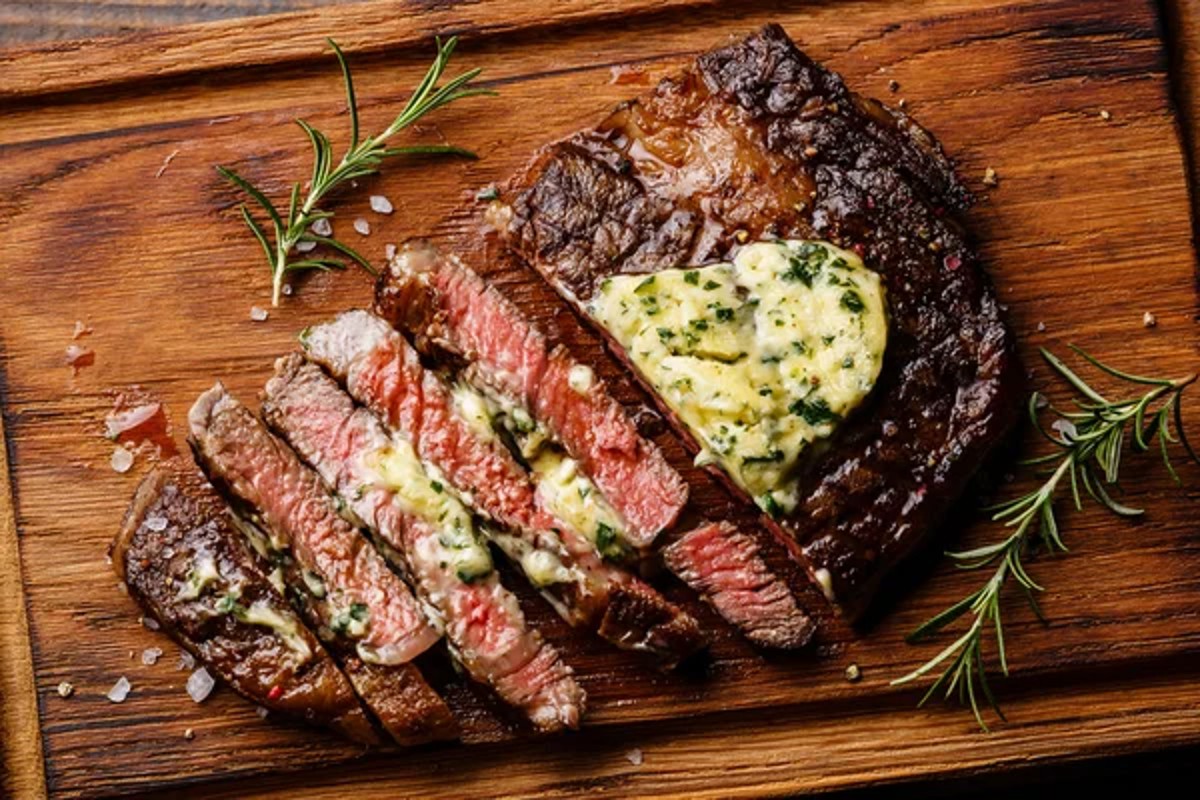
These 7 herbs will add delicious flavor to just about any cut of steak:
- Basil
- Chives
- Oregano
- Parsley
- Rosemary
- Sage
- Thyme
Basil for steak:
Basil is part of the mint family and it has a fresh green flavor with peppery notes and a hint of anise as well as mint.
There are several basil varieties used in cooking: sweet basil, lemon basil, Thai basil and Holy basil.
- Sweet basil is the type of basil most often found in cooking. It’s found in Mediterranean styled dishes such as pastas, pesto and spaghetti sauce. Its flavor goes well with beef and especially steak.
- Lemon Basil has similar flavor as sweet basil but with bright citrus notes. I prefer to use lemon basil with fish, shrimp and chicken.
- Thai basil and Holy basil have a stronger anise flavor and more peppery notes to me. You will often find these types of basil used in Southeast Asian cuisines.
How to use basil with steak:
I often use dried basil when making soups, stews, casseroles and marinades. Adding the dried basil to recipes that include liquids, such as the broth in soups or the oil/vinegar liquid in marinades, helps to pull the flavor from the dried herbs. If you are using steak in one of these dishes then dried basil will work well.
I save fresh herbs such as fresh basil to include with recipes that do not have long cooking times or in sauces and dressings. It’s perfect to add to a pesto or chimichurri sauce that you serve over steak. Try it in a flavored butter that you use to top your beef steaks.
Chives for steak:
Chives are part of the onion family. They have a mild onion like flavor without any of the spicy bit that you get when eating raw onions.
How to use chives with steak:
The flavor of chives are mild enough that heat will destroy it so they are usually noted added to food while it is being cooked. They are better when added right before serving.
While you can sprinkle diced chives on steak they are usually included in sauces or flavored butter used to top steak once its been cooked. Try this Garlic Herb butter featuring fresh chives and add a pat on top of your steak to add extra flavor.
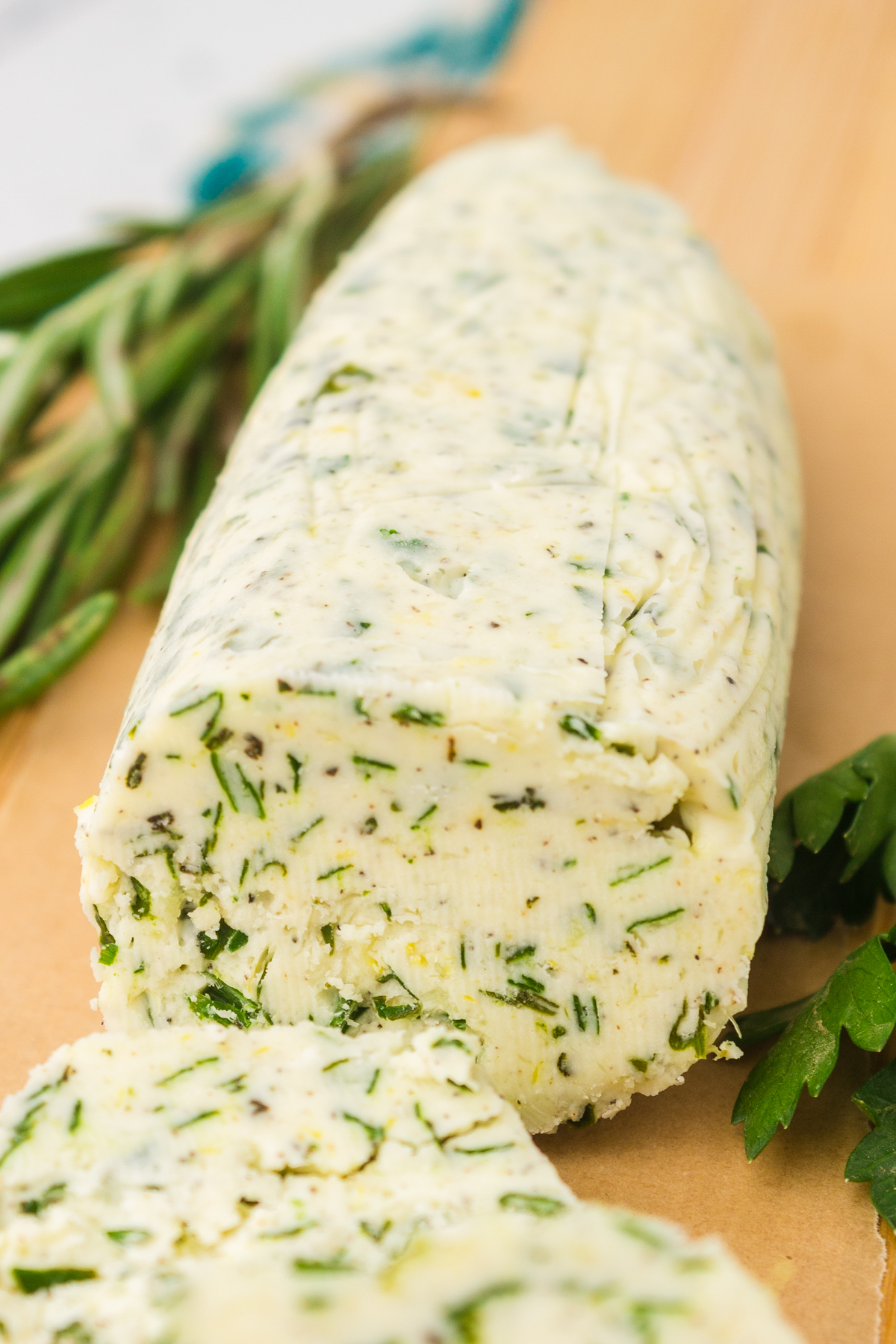

Oregano for steak:
Oregano has a flavor similar to basil. It has a green, sweet and a bit spicy with some mild notes of minty flavor. The green flavor complements the other herbs on the above list.
How to use oregano with steak:
Similar to basil you will find that dried oregano is better used in recipes in which it will be cooked with some type of liquid such as soups, stews, casseroles and other savory dishes.
Use fresh oregano to add flavor to the steak at the end of cooking or in dressings, sauce or other toppings.
Parsley for steak:
While you’ve seen fresh parsley added to your plated food as a garnish it also makes a delicious herb to flavor your steak. It has an earthy green flavor and the flat leaf variety of parsley is often mistaken for cilantro.
You will often find two types of parsley in your local stores – flat leaf parsley and curly parsley.
- Flat leaf or Italian parsley looks like its name. The green leaves are flat, open leaf. It has a stronger flavor than the other variety.
- Curly leaf parsley is the form that you see used as a garnish. The leaves are flower like with close, tight leaves which gives them a curly appearance.
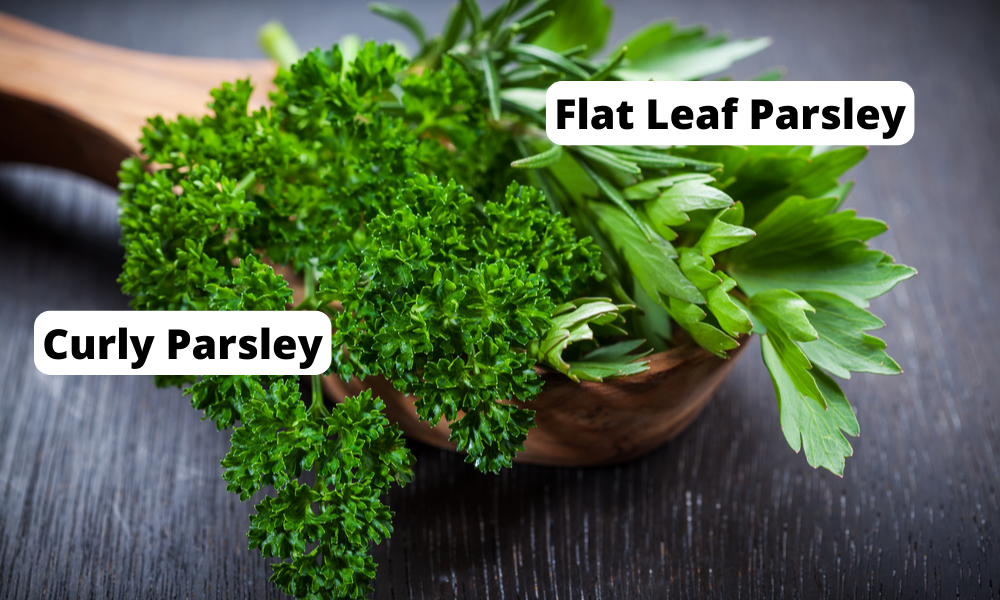

How to use parsley with steak:
You can use either variety in sauces, dressings and flavored butter. Try mixing a bit of minced parsley with a bit of garlic and lemon juice into butter and use it to top steak.
I love making chimichurri sauce with parsley. I use it as a marinade for steak and then as a sauce to drizzle over the finished steak.
Rosemary for steak:
Rosemary has a green, piney flavor with some citrus notes that tastes delicious with steak. The leaves of the rosemary plant is found in so many types of cooking. The sprigs of rosemary are even used as kabob skewers to impart flavor into food.
How to use rosemary with steak:
The rosemary leaves can be used both dried and fresh. I find the rosemary has more green notes when fresh but its just as delicious dried. When using dried rosemary you will want to crack the needles/leaves before using them. The chopped herbs allow more flavor to infuse into your food.
Dried herbs have stronger flavors than fresh herbs. You can substitute 1 teaspoon of dried rosemary for every tablespoon of fresh rosemary in your recipes.
Try adding dried or fresh rosemary to some olive oil and gently heat it to infuse the olive oil with flavor. Then drizzle a bit of the flavored oil into a pan before cooking your steak.
As well the other herbs add rosemary to flavored butters, sauces or dressings.
If you are making steak kababs you can use rosemary sprigs in place of a wooden skewer. Grill the steak or sear in a hot skillet before cooking to your desired doneness. The flavor that the rosemary adds to the steak is amazing!
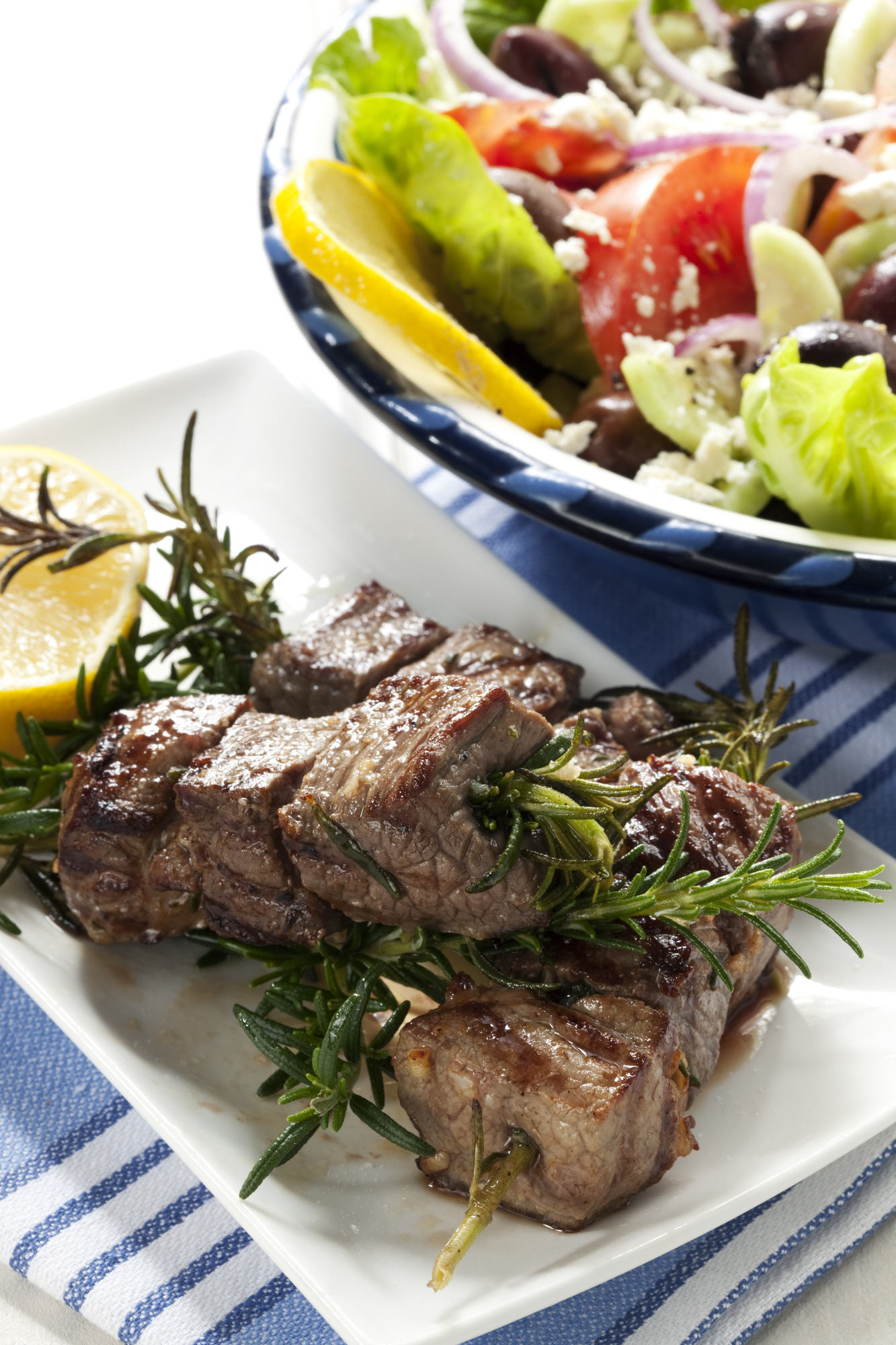

Sage for steak:
Sage is one of those herbs that people don’t often think about when it comes to adding flavor to steak. This Mediterranean herb is part of the mint family and has notes of lemon and eucalyptus. The flavor of sage goes well with beef dishes and you will often find it in beef stew.
If you look in the herb and spice section of your local grocery store you might find sage available as rubbed sage or ground sage.
- Ground sage is made by drying the sage leaves and grinding the whole leaf. When you look at this form you will see small bits of finely chopped leaves.
- Rubbed sage is made by rubbing the dried leaves together. This produces an ultra fine powder that has a less intense sage flavor.
You can substitute 2 teaspoons of rubbed sage for every teaspoon of ground sage in your recipe.
The other form of sage is fresh sage leaves. They are deliciously aromatic and should be added at the end of cooking or right before serving. 1 tablespoon of fresh sage is equal to 1 teaspoon of dried sage.
How to use sage for steak:
Try creating a simple browned butter and sage mixture to dip or drizzle over your steak.
Place a stick of butter in a small pan over low heat and cook, stirring frequently, until it begins to change color. You’ll see the butter slowly take on a brown color as the milk solids are toasted. Browned butter has a deliciously rich, nutty flavor. Adding fresh sage leaves makes it even better.
You’ll want to add the sage at the very end of cooking (during the last minute of cooking). You want the butter to pull in the sage flavor but you don’t want to cook the sage leaves so they become too crispy.
Pour the melted butter over your steak or favorite cut of beef or dip pieces into the butter. It’s insanely delicious.
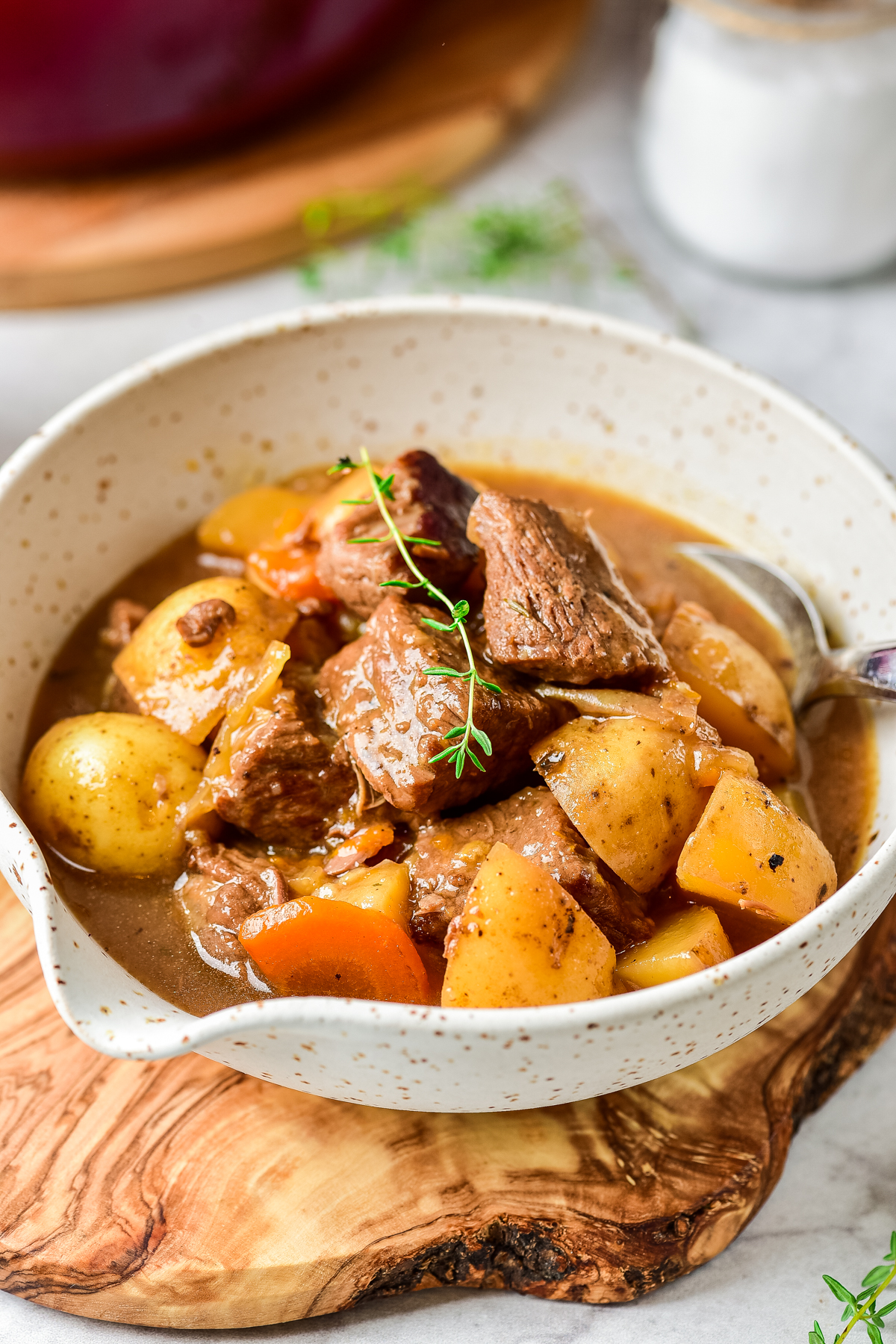

Thyme for steak:
The small leaves of this fragrant herb are used to flavor savory foods and go well with all forms of beef including steak. It has a grassy, herbal flavor that can be used dry or fresh. Only the leaves are used and the stems are discarded.
You can add whole sprigs of fresh thyme in stews and soup as well as lay them over fish, chicken and beef while cooking. Once the dish is done cooking the sprigs are typically removed and discard as the food has already absorbed the flavor. If you wish to add additional fresh thyme it can be added at the end of cooking.
How to use thyme with steak:
As with all the other listed herbs you can use thyme to add flavor to sauces, dressings, marinades and flavored butters.
Include thyme in a dry steak rub along with black pepper and kosher salt to spread over the steak before cooking to give it amazing flavor.
You can also place sprigs of thyme in the pan or skillet that you use to cook your steak. Add some olive oil and heat the thyme in it over low for 2 to 3 minutes to pull some of the flavor in while heating the pan. Add the steak to the hot pan (medium-high heat) to sear each side and then turn the heat down and continue cooking to your desired level of doneness.
Try using a cast iron skillet on to cook your steak. It’s the best way to get a nice seared crust on your steak.
The next time you make steak be sure to include some of these flavorful herbs. They add delicious flavor and go well with steak.
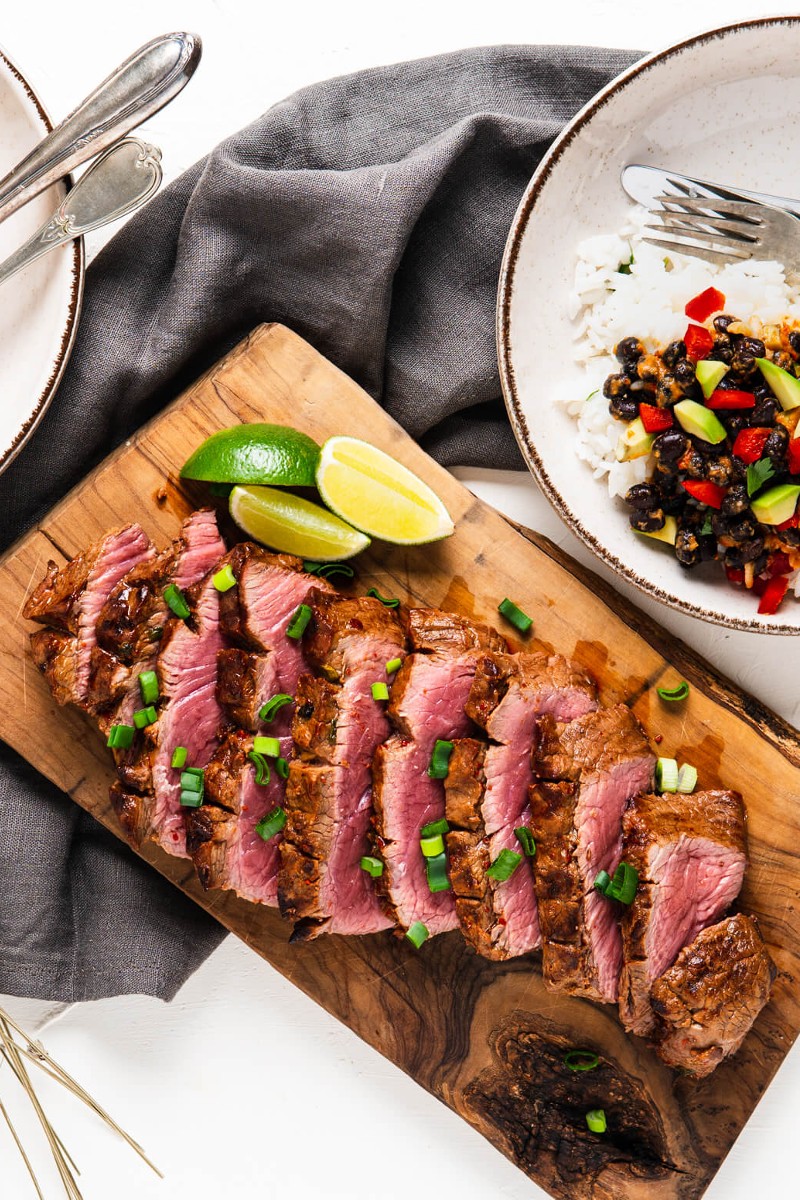

Try some of these delicious steak and beef recipes:
Crockpot Copycat Chipotle Barbacoa
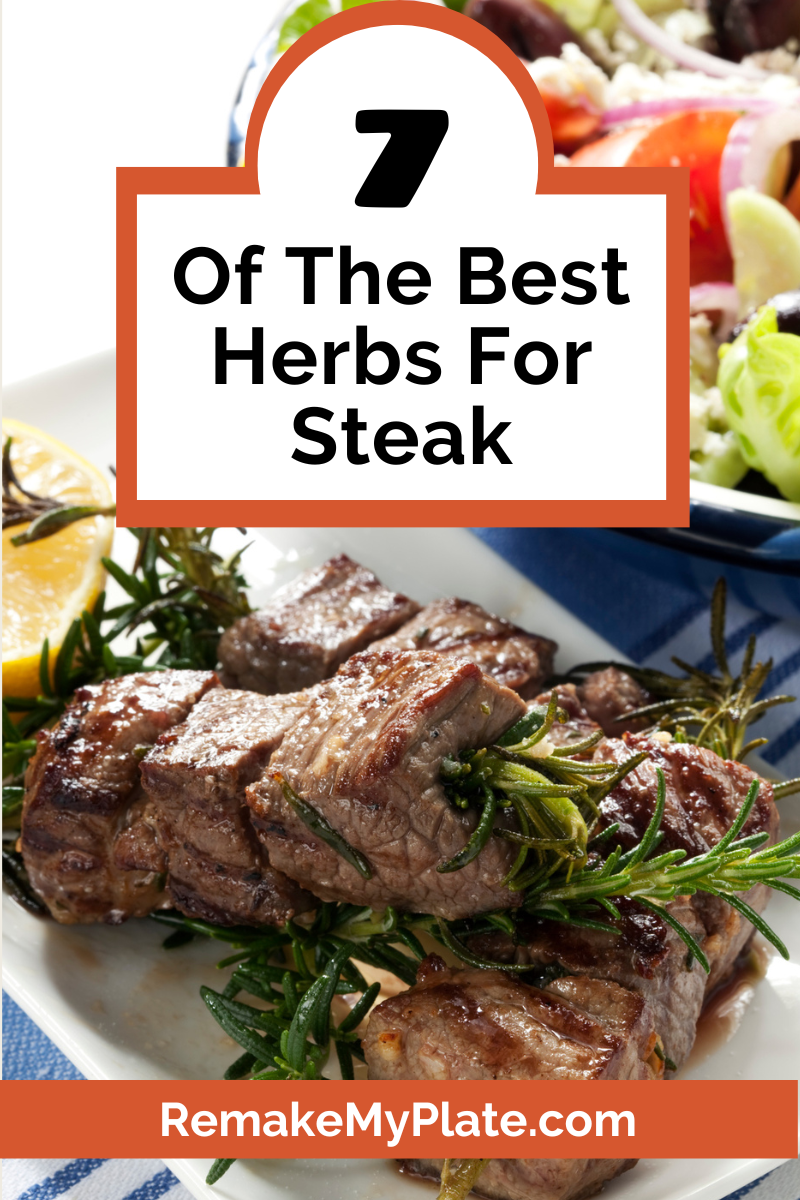

Want to get new recipes sent directly to your inbox? Then subscribe to our newsletter (see below) and be the first to know when we post a new recipe as well as get weekly shopping, cooking and meal planning tips. Follow me on Pinterest where you can find links to our recipes as well as other recipes you and your family will enjoy.
This post may contain affiliate links. Please see our disclosure policy. If you click on the banner below you will be taken directly to my Etsy shop to see the digital items currently listed.

